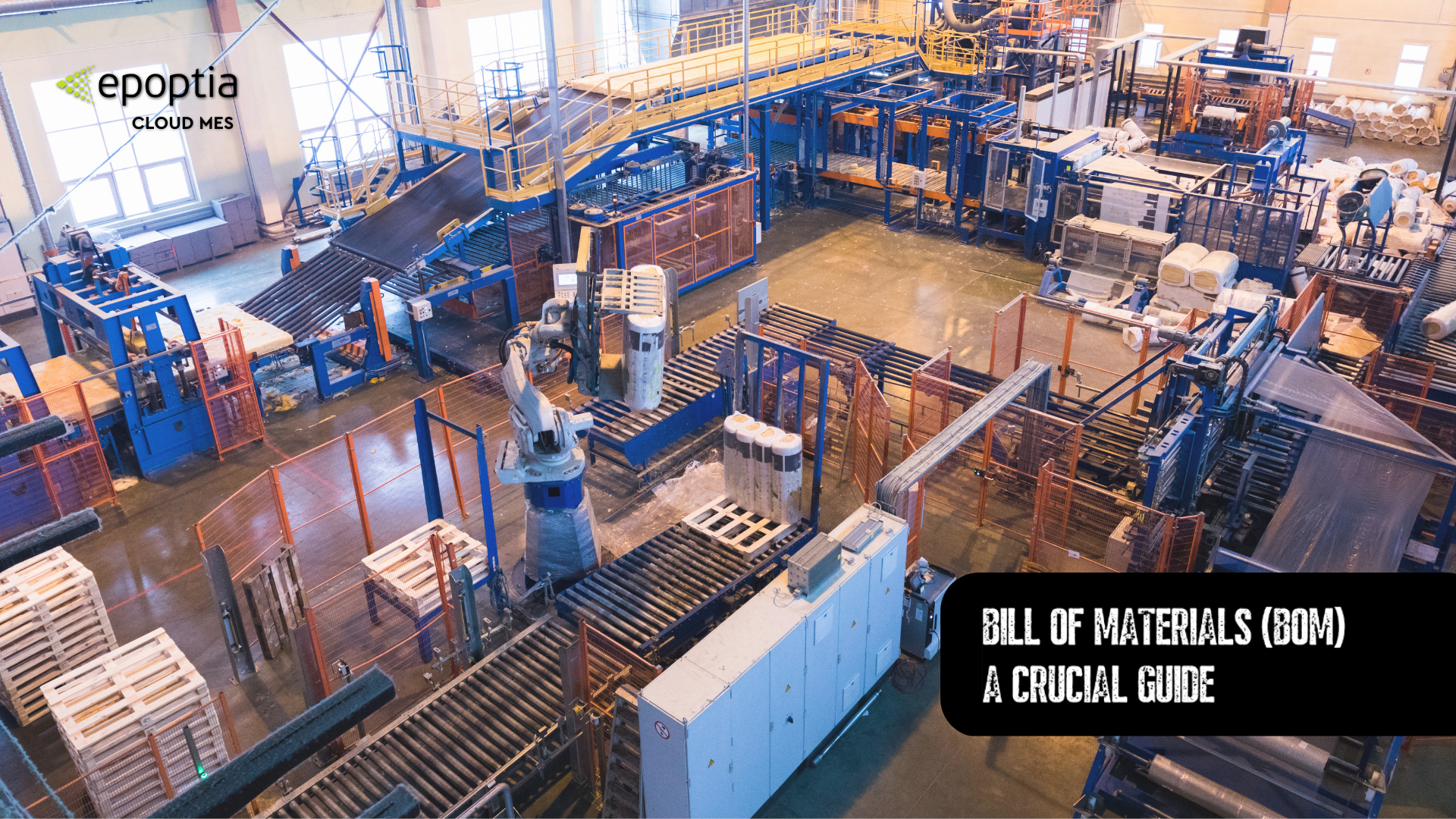Read our guide to Bill of Materials and learn about different types of BOMs, their benefits and what to include in them.
A Crucial Guide to Bill of Materials (BOM): If you work in manufacturing, then you are probably familiar with the term “Bill of Materials” (BOM). A Bill of Materials is a comprehensive list of all the components, parts, and raw materials required to manufacture a product. It serves as a crucial document that helps manufacturers plan and manage their production processes. Without an effective BOM, manufacturing can become inefficient and production costs can skyrocket. In this guide, we’ll discuss the different types of BOMs, their benefits, who creates them, and what to include in them. We’ll also provide tips for building an effective BOM and how Epoptia cloud MES can help job shop manufacturers streamline their production processes with ease.
What is a Bill of Materials (BOM)?
A Bill of Materials (BOM) is a comprehensive list of all the raw materials, components, sub-assemblies and finished products needed to manufacture a specific product. It is a document that outlines the exact quantity, description, and cost of each item that goes into producing a product. BOMs play an essential role in manufacturing because they provide a clear picture of what needs to be produced and what materials are needed to produce it.
Moreover, a BOM is a critical document in manufacturing as it acts as a blueprint for the entire production process. It ensures that all the required materials are available in the right quantities, and it prevents any confusion or discrepancies that could cause delays or errors in production.
The BOM serves as a communication tool between different departments and suppliers, ensuring that everyone involved in the manufacturing process has the necessary information to do their job effectively. Without a BOM, it would be impossible to manage the complexity of modern manufacturing processes, and it would be difficult to ensure that every product meets the desired quality standards.
Types of BOMs
There are three main types of BOMs. Each type serves a different purpose in the manufacturing process.
Engineering BOM: It is used during the design phase of a product and includes all the components and materials needed to make the product. More specifically, the Engineering BOM is typically created by the design team and used to plan the initial production of a new product. This BOM may undergo several revisions during the design process as new information becomes available. Once the design is finalized, the Engineering BOM is used as a reference for creating the Manufacturing BOM.
Manufacturing BOM: This BOM is used during the production process and is more detailed than the engineering BOM. It includes information such as the quantity, location, and cost of each item. What is more, this is is the most detailed type of BOM and it is used by the production team to manufacture the product. It includes information such as the quantity, location and cost of each item needed to manufacture the product, as well as any assembly instructions. Additionally, the Manufacturing BOM may also include information about the tools and equipment.
Service BOM: It is used after a product has been manufactured and sold to a customer. More specifically, it includes information about how to service and repair the product. The Service BOM is used after a product has been manufactured and sold to a customer. It includes information about how to service and repair the product, including a list of the parts needed for repairs. The Service BOM can help manufacturers ensure that they have the necessary replacement parts on hand to provide efficient customer service and minimize downtime for the customer.
The Benefits of an Effective BOM & What to Include
BOMs are typically created by engineers, designers, or production planners. They are responsible for identifying all the raw materials, components, sub-assemblies, and finished products needed to manufacture a specific product. Having an effective BOM can bring numerous benefits to a manufacturing company, such as:
1. Better inventory control and management
2. Improved production planning and scheduling
3. Reduced waste and inefficiencies
4. Accurate costing and pricing of products
5. Increased speed and accuracy in the production process
What is more, an effective BOM should include the following information:
1. Part number and name
2. Description of the item
3. Quantity required
4. Unit of measure
5. Manufacturer name and part number
6. Cost per unit
7. Total cost of the item
Tips for Building an Effective Bill of Materials
To build an effective BOM, consider the following tips:
1. Clearly define the purpose of the BOM
2. Standardize the format and structure of the BOM
3. Include only necessary information
4. Keep the BOM up-to-date and accurate
5. Validate the BOM against the product design and production process
6. Use BOM management software to streamline the process
A Bill of Materials (BOM) is an essential tool for job shop manufacturers that want to streamline their production process, reduce waste and inefficiencies and accurately cost and price their products. Ultimately, by following best practices for creating and managing BOMs, they can achieve significant improvements in their production processes.
At Epoptia, we offer cloud MES software that can help job shop manufacturers effectively manage their BOMs and improve their production processes. Our software provides real-time data and analytics, enabling manufacturers to optimize their production processes and reduce costs.
To learn more about how Epoptia can help your business grow and succeed, contact us today to schedule a presentation.
For more information, check https://bit.ly/3vYnb4f.




















